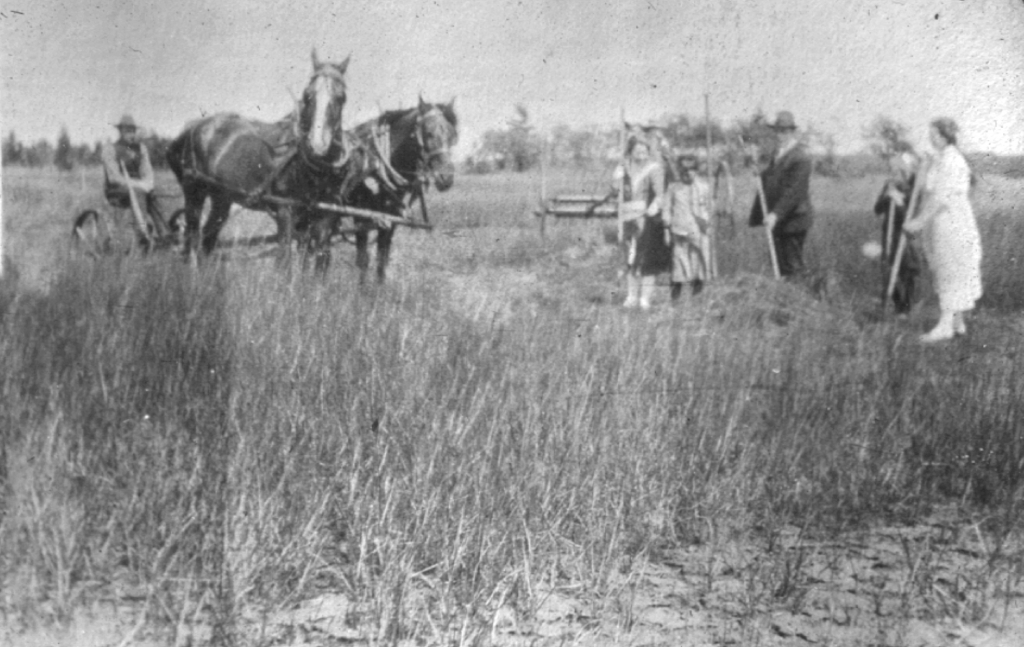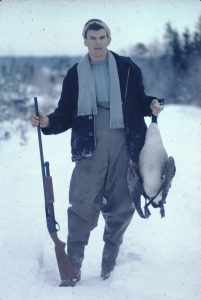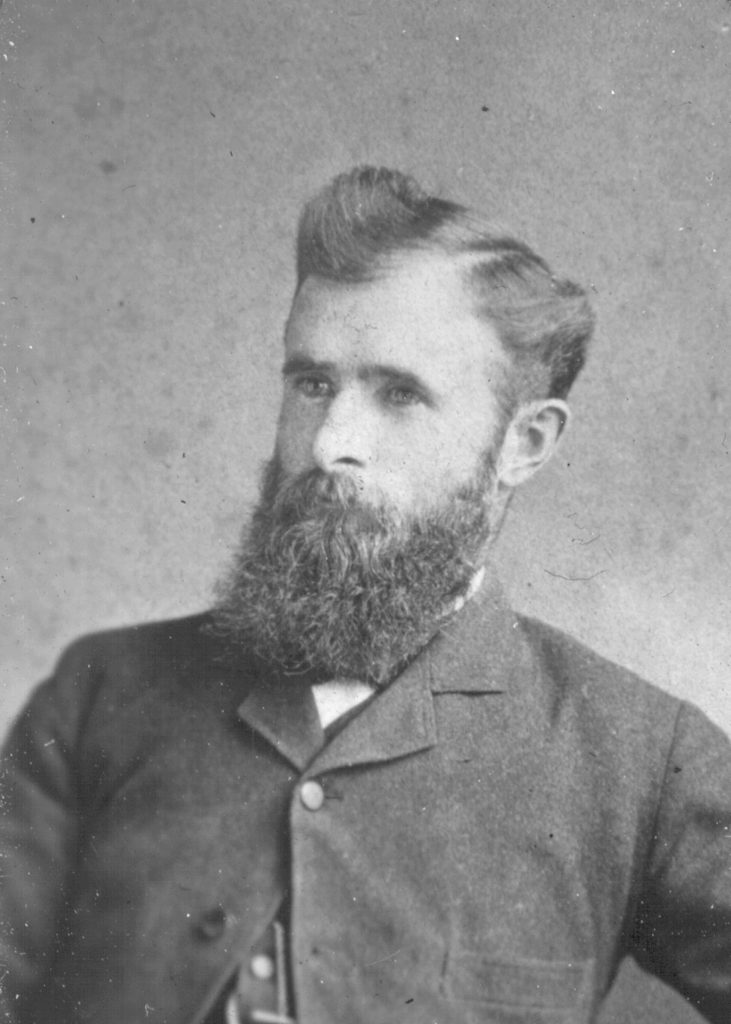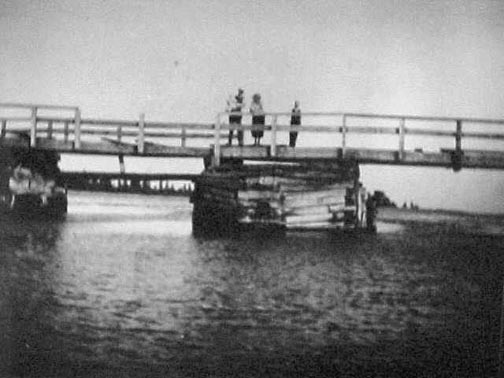Peter McNab Kuhn
It was indeed a struggle. Not only were there regular repairs to the aboiteau, especially in the spring when the ice leaving the harbour tore at the gates, but autumn storms too opened up the barrier on the eastern side of the harbour. Here, cribwork and rock had been built up to reinforce a natural barrier beach, and the road from West Lawrencetown ran along the crest to reach the bridge across the aboiteau. Ocean side rocks, sand, and beaches are never static, always affected by winds and waves. The problems Peter McNab Kuhn experienced over 100 years ago are mirrored in the efforts of the Cole Harbour Parks & Trails Association in trying to maintain today’s causeway across the harbour. Kuhn’s barrier, however, not only faced the full force of the ocean but he and his sons did the work all by hand, often while standing waist deep in frigid water. It was no small feat.
Audio clip with transcript “Excerpt from ‘A Tale of Two Dykes.'”
At the age of 81 Peter’s third daughter Margaret, having retired with her husband the Reverend Herman Campbell to a new home on Flying Point, published her memories of Cole Harbour in A Tale of Two Dykes. Among those she consulted was her brother Wilfrid, Peter’s second son and first child to be born in their dyke home, who was then living in Florida. She included an account of the yearly challenge that resulted from the build up of ice floes, spring storms and flood tides. Above, local storyteller Cindy Campbell-Stone reads the excerpt.
Hay was probably Peter’s most successful crop although the quality was never great. The more nutritious upland grasses wouldn’t grow on the poorly drained and salty mud flats: even Kuhn’s changes to the sluice gates to improve drainage helped only slightly. Young beef cattle grazed on the marsh in summer but were finished around the homestead where the grass was better.

Jack Settle and others cutting hay on the Cole Harbour dyke. [19-?]. The Ira Settle Album. CHRHS Archives.
Audio clip with transcript: “Cutting the Marsh Hay.”
In 1995, a written account by Ian Forsyth of cutting marsh hay was printed in a book called The Life and Times of Peter Max Kuhn, 1887 – 1938, by Bernard Kuhn. This account is read aloud by Ray Adams in the clip above.

A young man hunting in Cole Harbour, as many residents have done before him. 1970. Rosemary Eaton fonds. CHRHS Archives.
Local residents continued to hunt on the marsh and Kuhn’s efforts to enforce control over his land were unpopular and often ignored. As well, the fishing was affected by the aboiteau gates that interfered with natural marine lifecycles. An initial attempt to destroy the aboiteau was repaired, but eventually Kuhn’s struggle of more than twenty five years came to an end when the gates were mysteriously but irrevocably destroyed in 1917 (‘blown up” is the term usually used by the older residents). There seems to be no record of this destruction in newspapers of the time, no one was ever charged, and the event slipped quietly from public memory.



